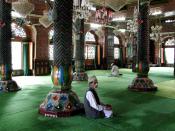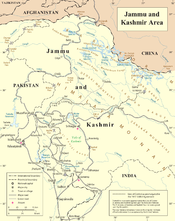Religious Wars of India
The beginning of the new millennium has been a heart wrecking one for the peace loving people of the world. The year 2001 saw dispute, destruction, and death, all in the name of religion.
As we usher in a new year with high hopes of peace, India and Pakistan are again on the brink of a war! Why are these two siblings always at loggerheads with each other? Is it because Pakistan is an Islamic nation and India predominantly a land of Hindus? No, the reasons are more political than religious!
It's hard to imagine that Kashmir, one of the most beautiful places in South Asia, inhabited by a peaceful population, can become the bone of contention between the two countries. There is no doubt that Kashmir became a "disputed territory" only because arrogant politicians tried to divide the region on the basis of religion.
Kashmir, a 222,236 sq km region in the northwestern Indian subcontinent, is surrounded by China in the northeast, the Indian states of Himachal Pradesh and Punjab in the south, by Pakistan in the west, and by Afghanistan in the northwest.
The region has been dubbed "disputed territory" between India and Pakistan since the partition of India in 1947. The southern and southeastern parts of the region make up the Indian State of Jammu and Kashmir, while the northern and western parts are controlled by Pakistan. A border called the "Line of Control" (agreed to in 1972) divides the two parts. The eastern area of Kashmir comprising the northeastern part of the region (Aksai Chin) came under the control of China since 1962. The predominant religion in the Jammu area is Hinduism in the east and Islam in the west. Islam is also the main religion in the Kashmir valley and the...



The Holy War
The essay was very easy to read, was very insightful and is well written. It does a wonderful job capturing the last 50 years of their war.
23 out of 23 people found this comment useful.